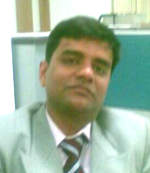ADVISORY ARTICLE
By Anil Seth
Gurugram, India
Don’t refuse to go on an occasional wild-goose chase; that is what wild geese are made for.
~Henry S. Haskins
We found the recent writeup by Christopher Cook fascinating and a good read. It is about finding the purpose of your project with three simple questions, and these are:
- What did you want to do when you were a child before anybody told you what you were supposed to do?
- What was it you wanted to become?
- What did you want to do more than anything else?
A project manager, I doubt that was your answer. Christopher’s article explores on refocusing our attention on the project for a better understanding of why we are willing to go through the daily struggles. The late-night phone calls and early morning emails do not seem so bad when the objective is clear. When the situation gets murky, that is when things get complicated. Quitting becomes real rather than a threat. These three questions (What did you want to do when you were a child before anybody told you what you were supposed to do? What was it you wanted to become? and What did you want to do more than anything else?) help us shift that negativity back towards the purpose. When the purpose is clear, the work becomes the reward…Find your project purpose!
From here the conflict starts between the desires and function.
Let’s take this conflict forward in the project execution.
In one of our management meeting, advice was sought on managing the conflict of late vendor data or late changes by the Client etc. The discussion led to formulation of following strategies:
(1) Project Execution Strategy (PES) prepared in proposal is to be explained to the team at the start of the Project.
(2) Client review requirements to be addressed during Project setup phase and schedule to be aligned accordingly.
(3) Know Your Client and review Client requirements wrt Project at the time of Project Set up. Know your client strategy to be included by Sales/Proposal Manager in PES during Proposal.
(4) Project to start with Control Budget planning (management of absolute budget to be accounted for during setup). The difference in control and absolute budget is to account for staffing escalation or subject matter expert (SME) support for specific activity.
(5) Use of available Vendor Data and Automation to be encouraged during setup phase. For example, this to include early meetings on usage of seed file for Smart Plant set ups and available automation tools to reduce vendor data impact.
(6) Tail end mind set and know your client endorsement– Absolute communication hierarchy is to be followed. This helps in managing performance factor(pf) of the team around 1.0.
The conflict in execution is at times related to Client demand, we will not discuss whether the demand is as per work assigned or a wish list. That will be addressed in future articles, the main challenge is to empower the consultant’s team during set up and it is found that the following early alignment strategies with the Client generally works (keeping the wish list parked). To enable a constructive discussion, proposed agenda to be circulated in advance to the meeting and to meet the project demands following information and documents are expected to be provided on or before kick-off meeting:
More…
To read entire article, click here
How to cite this work: Seth, A. (2022). Three Simple Questions, PM World Journal, Vol. XI, Issue VII, July. Available online at https://pmworldlibrary.net/wp-content/uploads/2022/07/pmwj119-Jul2022-Seth-Three-Simple-Questions-advisory.pdf
About the Author

Anil Seth
Gurugram, India
![]()
Mr. Anil Seth is working as Project Manager in Fluor’s India office at Gurugram. Fluor Daniel India Private Limited (Fluor India) provides a full range of engineering, design, procurement, and construction management services to Indian and overseas Clients. Fluor India is an established quality provider of engineering, procurement, construction management (EPC) and project management services for Fluor’s energy and chemicals, power, mining, and industrial projects, and is a key support office for Fluor facilities located in North America, Africa, the Middle East, Europe, and Asia Pacific
Earlier to Fluor, was in Larsen & Toubro Ltd. at Faridabad, India and managing the Project Engineering Manager Portfolio for hydrocarbon projects. Before joining Larsen & Toubro Engineering and construction division he has worked for polymer division in the Indian Petrochemicals Corporation Limited (now part of Reliance Industries)
He holds B.E. degree with Honors in CHEMICAL Engineering from Panjab University Chandigarh India and has also done Diploma in Environmental Management. He is certified for Harvard Manage Mentor and specializes in Building High Performance cross functional Task Force as well as Converting Breakeven Projects to Profitable scenario. He can be reached at anilshivani99@gmail.com or anil.seth@fluor.com
To see other works by Anil Seth, visit his author showcase in the PM World Library at http://pmworldlibrary.net/authors/mr-anil-seth/
Abut the Company
Fluor Corporation (NYSE: FLR) is a global engineering and construction firm that designs and builds some of the world’s most complex projects. The company creates and delivers innovative solutions for its clients in engineering, procurement, fabrication, construction, maintenance, and project management on a global basis. For more than a century, Fluor has served Clients in the energy, chemicals, government, industrial, infrastructure, mining, and power market sectors. Headquartered in Irving, Texas, Fluor ranks 110 on the FORTUNE 500 list. With more than 40,000 employees worldwide, the company’s revenue for 2013 was $27.4 billion. For more information, visit www.Fluor.com









